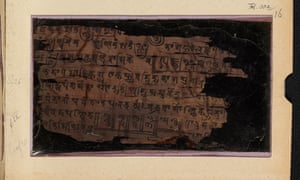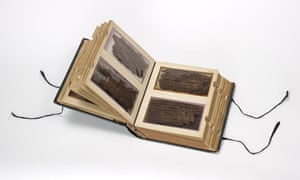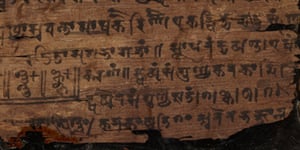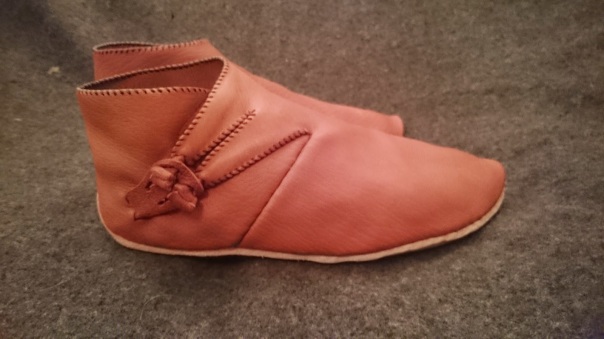ESSAYS ON GAME DESIGN
Essay Thirteen: Scientifica Magica
Now before anyone jumps to the wrong conclusion, based only upon the title of this post, let me state clearly that I am not one of those gamers or writers who favor turning magic (in either game or fiction) into a mere exercise in science and technology under a different name. I am not for “scientificizing magic.”
I am not in favor of turning either game magic or fictional magic into science by another name, nor am I one of those who favor making magic operate under closely regulated and studied rules of scientific function or with mathematical precision. I like my magic wild, uncontrolled to some degree, definitely unpredictable, prone to malfunction and misfire, and in most other ways outright dangerous.

image: http://d15osn4tlmtdxb.cloudfront.net/wp-content/uploads/2006/03/img-Burne-Jones.jpg
(You know, much like a woman. Now I say that half-jokingly, but only half jokingly. To me science and technology should operate like a man – with precision, with mathematical certainty, with rules, with predictability. Now am I saying all men are this way? God no, and I can only wish. I know real people as they truly are, you see, and that is merely a philosophical postulate of how male types would operate ideally, logically, and rationally. Sort of like saying all Vulcans should be like Spock.
On the other hand women should be unpredictable, without Newtonian mathematical precision, with emotional flare and passion, fuzzy and quantum at the edges, hard to pin down, and in more than one way, truly dangerous. Generalizations of course, and type generalizations as well, but they make the point. Magic to me should not be Science and science should not be magic despite all the modern Geekery in games and fiction that would have them be, in effect, merely interchangeable and fungible concepts for the same thing.)
Science should be amazing in what it can achieve but predictable in how it operates, Magic should be almost miraculous in what it achieves but largely unpredictable and untamed in both technical function and in its methods of operation. The very point of science is to be controlled and safe, reliable and commonplace, not dangerous, for a dangerous and rare science defeats the very purpose and function of being scientific. On the other hand the very essence of magic is to be rare, uncontrolled – especially in comparison to science and the mundane – and unreliable. For indeed if you have a magic that is too easy to control, utterly predictable, reliable, safe, and ubiquitous then you don’t really have Magic at all, you simply have science under the flimsy and inaccurate guise and faulty nomenclature of “magic.”)
Now all of that being said there is one way in which I favor the intersection of magic and science and that is in the analytical and detective capabilities of modern science, which often border closely upon the frontiers of what I would actually call magic. Or at least magical in effect.
Being an amateur scientist and having a near lifelong interest in physics, forensics, archaeology, medicine, chemistry and biochemistry I often keep up to date on new papers and techniques in those fields and have recently been studying several superb new and relatively new methods of analyzing, collating, detecting, examining, and understanding archaeological and forensic evidence. Such as the use of LIDAR, magnetic surface and subsurface scans, satellite imagery sweeps in the infrared, multiple data source computer modeling, etc.
In thinking on those things and what they can accomplish it has recently occurred to me that a new type of “magic” (of a kind rarely ever encountered in gaming and fiction) could easily be developed to mimic such scientific technologies without necessarily being limited to being scientific in operation.
For instance I have recently begun developing “spells” for both game and fictional use that mimic such new discovery techniques without presenting themselves in a scientific or predictable manner. I won’t specifically describe these “magics” in detail or enumerate the spells themselves as that would take too long and as one could easily develop multiple spells from these general categories in any case, but I will briefly describe a couple of these “spell types” for you to consider in developing your own magics in this regard.
1. REENLIVENING SPELLS – Spells which cast a glamour over an area or other target and can then present, in a complex still or even a moving image, the events that occurred long ago in a particular area, concerning certain bodily remains, etc. For instance the spell could take you back into time (figuratively speaking) to see events that had occurred long in the past, such as making you privy to a particular conversation, an event in the life of a person long dead, to witness a long forgotten or unrecorded (or even an historical) event so that you could view such things occurring for yourself. These would be very different spells from something like Speak with Dead because you would be an observer and witness, not a conversant, and such results would not be limited to mere third party descriptions but rather you would be a first hand, though passive, observer.
2. RECONSTRUCTION SPELLS – Spells which cast a glamour over an area of building or object and that allows you to see that area or building or object as it looked at another period (of the past), say at the point of its making or shaping or construction. Via the use of such an enchantment you could see a building as it is designed and constructed, an object as it is manufactured, or perhaps even several different time periods (in sequence or simultaneously overlain against one another) and their interactions, tracing the construction or object through time to several different time-points to gain detailed information about its history.
3. REENACTMENT SPELLS – Spells which cast a glamour over a large area or maybe a specific person or set of remains that allows one to view, hear, feel, taste, smell, and magically touch the reenactment of a famous battle, an unknown war, the forging of a weapon, a day in the life or an individual, or even the vision, trance, or dream of another individual or creature. The emphasis here would not be merely upon the gathering of information or the witnessing of an event, but more directly upon a sort of shared (or in this case reenacted/relived) past experience. Perhaps such a spell would actually allow you to become another person, another creature, or even an inanimate (but magically aware) object for a certain period of time.
4. RECREATION SPELLS – Spells which cast a glamour upon a particular object, building, device, etc. that can recreate a visual, interactive image of the same. Higher levels spells of this type can actually recreate a physically real or similar mock-up of the original object based upon the information gathered from the object remains by the initial glamour. Still higher level spells can recreate usable approximations of even formerly magical objects (though the magic contained in the reconstructed objects may be limited) and the very highest level such recreation spells can even recreate working (though not necessarily magical in any way) models of previously lost artifacts and relics (assuming there are any remains left for the glamour to read).
5. PROJECTION SPELLS – One of the other types of spells would have to be enacted first, but, once that was done, and using the information or experiences gathered from that initial set of magics a spell caster could then seek to work a secondary set of spells that would allow one to project what would happen in the future regarding one’s chosen target or set of targets. For instance say you were in an existing castle, you could then use a projection spell to analyze and predict how it might fall to ruins, what part of the construction would be destroyed, what parts preserved, why, and by what agencies of destruction or even of renovation or preservation.
As I said above I will not enumerate the specific spells I have developed using these categories or ideas of magical effects because I don’t want to limit your imagination to my conceptions. I think every DM or player or writer ought to develop their own ideas regarding the specifics of this concept.
However I will say this, that when it comes to the operations of “magic” in my own milieus and worlds and writings every use of magic is at least tinged, and sometimes heavily tainted, with the possibility of danger, misdirection, and even failure and misfire. For instance considering the spell types above perhaps the information gleaned from such a spell will be entirely accurate, then again perhaps the work will be only partially accurate, or even mostly inaccurate. Perhaps the caster intends to see an image of one particular fortification or construction site and what he actually sees is an entirely different site. Perhaps the spell will fail entirely (with no discernable consequence or with great and dire consequence). Perhaps the spell will erroneously mix information from several different objects together and produce an amalgam of an object that does not really exist. Perhaps the spell will cause a “Rogue Projection” that will attempt to divine or even produce an unanticipated future rather than accurately display the past. Or perhaps the spell will draw the unwanted attention of some dangerous creature or being that is monitoring or warding the intended target.
The dangers surrounding the use of such magics, as with the use of any such game or fictional magic, could be nearly inexhaustible.
And I fully encourage such dangers, just as I encourage the dangers inherent in the use of any magic.
Magic is, after all, not science. And it should not operate like science. Even when it closely mimics the basic functions of science and technology (as in the case of the “spells” described above), it should be remain essentially separate and distinct in operational methods and in general nature.
For even if magic yields an essentially scientific purpose this does not mean that it should in any way reproduce a technological outcome or result.
It should always remain dangerous, rare, unpredictable, mysterious, and “magical.”
Otherwise it is mere science under another name



















 Italian and Pakistani Archaeologists have discovered large layers of an Indo-Greek city with weapons, coins and pottery forms, in Barikot,
Italian and Pakistani Archaeologists have discovered large layers of an Indo-Greek city with weapons, coins and pottery forms, in Barikot, 







THE MURALS OF DATONG
Mar 14
Posted by occu77
This interests me for purely archaeological, cultural, and historical reasons, but it also goes to show that in gaming and in writing fiction, authors and creators (and modern people in general) often overlook the near ubiquitous artwork and coloring that often existed in many Medieval and certainly a great many Ancient urban centers.
The answer seems self-evident to me if you think on it awhile. Lacking things like cinema and film and television, etc. then what would be your source of visual and imaginary stimulation in a world devoid of such things? Indeed, what would be your method of advertising your skill and craft and wealth compared to that of a neighbor or competitor? How would you communicate with foreigners? How would you establish yourself even after death?
Art work.
Impressed everywhere you could impress it as strikingly colorful and vibrant as you could make it.
I don’t think our ancestors were less impressed with visual imagery than we are, I think they were likely more conscious of it because they had less of an opportunity to render it in motion and in a way that was seemingly active and alive. They had to do so not “in the air” (images transmitted by carrier waves) but by time and by place as “solid images,” fixed by time and place. Art then was not shifting energy, but actual craft, and anything that called attention to that craft would have been a vital element of that craft. Color, skill, literary allusion or merit, design, complexity of composition, etc.
So they looked for every opportunity to do so that leisure or condition allowed.
This is why the Ancient world (especially) and any sufficiently advanced corner of the Medieval world looked as it did.
Writers, poets, game developers (even historians and non-fiction writers) would do well to note that in their own works. It would add real depth to their efforts…
Ancient Tomb Decorated with Vibrant Murals Found in China
Credit: Courtesy of Chinese Cultural Relics
A 1,000-year-old circular tomb, whose walls are decorated with colorful murals, has been discovered in Datong City, in northern China.
Because the tomb’s entranceway is sealed off with bricks, archaeologists had to enter through a hole in the deteriorating arch-shaped roof.
The team, from the Datong Municipal Institute of Archaeology, found cremated human remains in an urn in the middle of the tomb. No texts were found in the tomb, but the archaeologists believe that the tomb likely belonged to a husband and wife. [See Photos of the Circular Tomb and Colorful Murals]
The murals on the walls show servants, cranes and numerous articles of clothing that hang on several stands, their colors still vibrant despite the passage of a millennia.
Colorful clothing
Colorful clothing abounds on the tomb’s murals. One clothes stand, painted on a mural on the west wall, has “sky blue, beige, bluish-gray, yellowish-brown and pink clothes,” wrote the archaeological team in a paper published recently in the journal Chinese Cultural Relics. “The garment to the far right has a green-diamond grid pattern, each diamond of which has a small red decorative flower in it,” wrote the archaeologists, noting that another article of clothing has what appears to be a jade ring that “hangs at the waist.”
Credit: Courtesy of Chinese Cultural Relics
Additionally, the mural shows that “in front of the clothes stand there is a long rectangular table, on which are placed four round plates, black on the outside and red inside, holding, respectively, a headdress, bracelets, hairpins and combs,” the archaeologists wrote.
On the east wall of the tomb the mural shows another clothes stand. “On the stand hang beige, light green, bluish-gray, pink and brown clothes,” the archaeologists wrote. “On one of the garments hangs a ring-shaped pei pendant accompanied by a string of black beads.” Pei is a word that can mean “matching” or “accompanying” in English.
Liao Dynasty
The team believes that the tomb likely dates to the Liao Dynasty (A.D. 907–1125). Historical records indicate that this dynasty, controlled by the Khitan, flourished in northern China, Mongolia and parts of Russia.
At that time, people in northern China were sometimes buried in tombs decorated with murals. In 2014, Live Science reportedon the discovery of another tomb containing murals, which was found decorated with images of stars as well as numerous animals, including a crane, deer, yellow turtle and even a cat playingwith a silk ball. That tomb was also excavated by a team from the Datong Municipal Institute of Archaeology.
Archaeologists believe that both mural-decorated tombs will help shed light on those who lived during the Liao Dynasty.
The tomb with the murals showing colorful clothing was excavated by the Datong Municipal Institute of Archaeology team in 2007. The team published a report on the tomb in 2015, in Chinese, in the journal Wenwu. That report was translated into English for publication in Chinese Cultural Relics.
Original article on Live Science.
Editor’s Recommendations
Share this:
Posted in ALLTHING, Archaeology, Art, Article, Commentary, MY WRITINGS AND WORK, RESURRECTED RELICS, Uncategorized
Leave a comment
Tags: art, China, Medieval, mural